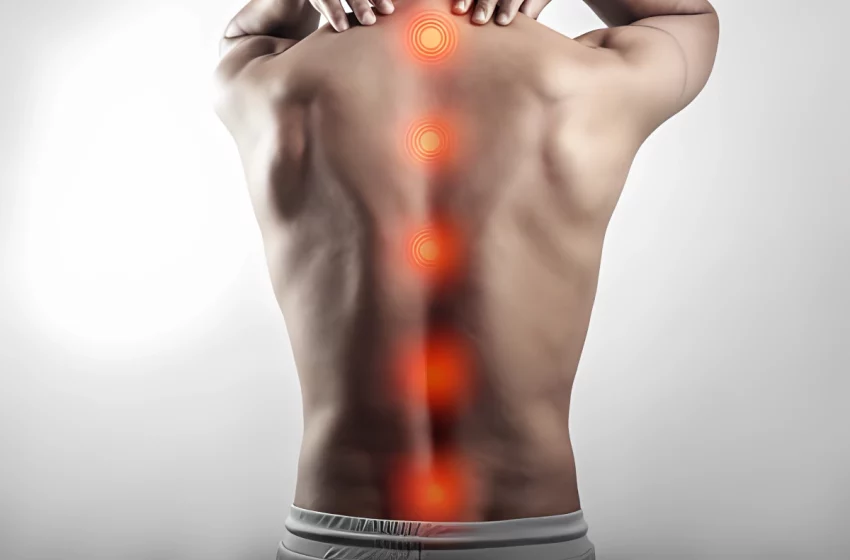
Everything About Sciatica Relief And Diabetes Neuropathy
Table of Contents
What is Sciatica?
Everything About Sciatica Relief And Diabetes Neuropathy – Sciatica is lower back pain that extends to the buttock, leg, and foot. It gets its name from the sciatic nerve, the largest and longest nerve in the body, reaching up to an inch in diameter. It begins in the lower back and divides into smaller nerves that run down the leg to the foot.
Sciatica is often related to sacroiliac joint problems. The joint only moves within a small range of motion and has an uneven surface. If you dislocate yourself slightly while running or make a misstep on uneven ground, it can cause much pain. In most cases, it affects only one side of the body.
What does sciatica feel like?
- Intermittent or continuous lower back pain that extends to the buttock, leg, and foot
- Numbness, tingling, or “pins and needles” sensation
- Stabbing or burning pain
- Muscle spasms or weakness
- Decreased reflexes in the knee or ankle
- Risk factors for sciatica
- herniated disc
- Arthritis
- Pressure on the nerves in the back
- carrying too much weight
- Bad posture
- Hip problems, such as degeneration of the joint or a strain or tear of the muscles or ligaments
- Pregnancy
- Stress
- Wearing high heels or poorly fitting shoes
- Sitting for long periods
Causes of sciatica
The common cause of sciatica is a herniated disc, and some studies show that 90 percent of sciatic nerve pain is related to a herniated disc in the lower back.
A herniated disc protrudes through the vertebrae and, in most cases, is due to age-related degenerative changes in the disc. When a herniated disc presses the nerve, the nerve can become irritated, swollen, pinched, and painful.
Sciatica-related back pain can disrupt even the simplest things in life, and long-lasting or severe discomfort along the spine could indicate a serious problem.
Treatment for Sciatica Relief
Discussing your back pain is an excellent place to start your recovery journey. Chicago Pain Control Management helps evaluate spinal function, pain symptoms, and risk factors and gives you an idea of what to do next based on the results.
When you see a provider, they will review your complete medical history and ask how your symptoms developed. Your reflexes, range of motion, muscle strength, and stability will also be checked.
They will perform imaging tests, such as an X-ray or MRI, if necessary. However, it can be easy to diagnose the cause of sciatica with imaging alone. An essential part of the diagnosis will be to rule out the causes of the pain until a probable reason is found.
At Chicago Pain Control, they connect you with a team of specialists who work together to provide you with a personalized treatment plan. Comprehensive spine treatments allow you to return to the activities that matter most to you.
Sciatica relief at home
- Application of ice packs to relieve inflammation during the first week
- Heat application after the first week
- Hot baths or showers
- Self-massage
- Walk
- Stretching exercises
What is Diabetic neuropathy?
It is nerve damage that can affect various regions of the peripheral nervous system. They occur as a late consequence of diabetes mellitus.
It is a disease of the peripheral nervous system resulting from diabetes mellitus. Due to constantly elevated blood sugar levels, the peripheral nerves are damaged and lose their function. The nervous system includes all parts of the motor, sensory, and autonomic nerves outside the central nervous system.
Functionally, the nervous system is divided into two systems:
The autonomic or vegetative nervous system.
The autonomous or autonomic nervous system controls all of the body’s vital, automatic essential functions. These include heartbeat, breathing, digestion, sweating, and blood pressure regulation. It comprises two parts: the sympathetic and the parasympathetic. Diseases of autonomic nerves are referred to as autonomic neuropathies.
The somatic nervous system
The somatic nervous system controls all bodily processes that can be influenced at will. It is used to manage the skeletal muscles so that, for example, arms or legs can be moved. It also serves for the sensory perception of sensory stimuli. Depending on the system affected, diseases of motor and sensory nerves are referred to as sensorimotor, motor, or sensory neuropathies.
In the early stages of the disease, it often goes unnoticed and free of symptoms. However, after 25 years of diabetes, around 50% of those affected have symptomatic peripheral neuropathy. Diabetic neuropathy usually occurs together with diseases like coronary heart disease, peripheral arterial disease (PAD), arterial high blood pressure (hypertension), increased blood lipid levels (hyperlipidemia), and obesity.
What causes peripheral neuropathy?
Long-term high blood sugar levels cause diabetic neuropathy. Other factors can cause nerve damage, such as:
- Alcoholism
- Autoimmune diseases
- Certain types of cancer and the chemotherapy used to treat them
- certain medications
- Toxin exposure
- Hereditary neuropathy, such as Charcot-Marie-Tooth disease
- Kidney, liver, or thyroid diseases
- Physical injuries or trauma from a fall or other accident
- Pinched nerves
- Poor nutrition or vitamin deficiency
- Repetitive movements that affect a single group of nerves
- Smoking
At Chicago Pain Control, specialized professionals will help you find the origin of the problem and make your recovery as quick as possible. What you are waiting for: Book an appointment today at Chicago pain Control and get the help you need!


